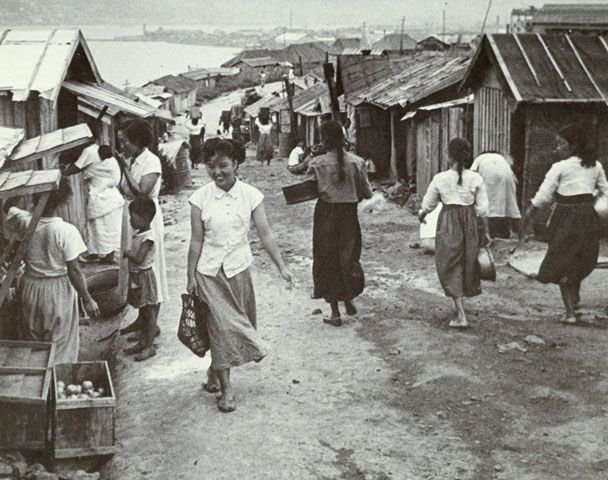myKOREA with Niall Ruddy
As part of our myKOREA series, we’ll be asking someone on the local scene to share their journey through Korean culture by naming their favourite musicians, movies, and artists. We’ll also be asking them to tell us about one more thing of their choosing.
For this edition, we spoke to Niall Ruddy. Originally from Northern Ireland, Niall is a Busan based photographer whose work captures the hidden beauty of Korea’s urban spaces. He recently finished a project that analyses the effect of the Korean War on contemporary society.
For more information on Niall, visit niallruddyphoto.com or follow him on Instagram @niallruddyphoto.
Music: TRAITOR
When I first came to South Korea in 2011, it took me a while to find the live music scene. I lived in Changwon before I moved to Busan and over there, there wasn’t much in the way of live music.
One of my first visits to Busan brought me to the KSU area where a friend and I saw the punk bands Stoned and Nacho Pupa. From there I discovered Club Realize and so many great punk and heavy metal bands like All I Have, Derrick, Method and Gwamegi.
My favourite is probably Traitor (@traitor_bsdm). They are a nu-death metal band and they really encapsulate a lot of the anger and disaffection of the youth of the country. Every member of the band is excellent at what they do, but special mention has to go to the vocalist irohana. She is a very quiet, nice person off the stage, but when she performs she is like a possessed demon. Her vocals, in keeping with the band’s sound, are ear-crushingly brutal in a good way.
Movie: THE VENGEANCE TRILOGY
It is so hard to choose a movie because there are so many amazing movies that have been made, and continue to be made, in South Korea. Of course, many people are realising the incredible artistry in the film industry here thanks to Parasite and I’d like to highlight the movie that was the Parasite of my youth. I first became aware of Korean film through the early-2000s wave of Tartan extreme movies that were coming out of Asia. They were usually hyper-violent and horror based.
After watching every Asian horror to come out at the time, I started exploring further and found Park Chan Wook. To say that his Vengeance Trilogy changed my life is no exaggeration. I saw Oldboy first and it remains my favourite movie. I saw it in 2003 and began plotting how I could move to South Korea. I had never seen anything like it but I wanted to experience and try to understand a society that could produce such a revelatory piece of cinema.
Having grown up in the violence of Northern Ireland in the 80s and early 90s, I think I felt a spiritual bond with the depiction of vengeance, violence and the question of who is the true victim.
Art: Limb Eungsik
I have recently completed a project that looks at the effect and influence that the Korean War continues to have on contemporary Korean society from the perspective of someone who also grew up in a divided country. I have tried to familiarise myself with Korean photographers that have examined the same, or similar, subject matter. In doing so, I discovered the work of many amazing contemporary artists such as Park JongWoo, Oh HeinKuhn and Kim OkSun.
The photographer that informed my understanding of the Korean War was Limb EungSik. He was a street photographer who was influenced by Cartier-Bresson, Alfred Stieglitz and the infamous humanist exhibition ‘Family of Man’. He worked in Busan and Seoul around the time of the Korean War and the war itself shifted his style from ‘salon photography’ to, what he named, ‘life-centred realism’ (Shinseonhwe).
He captured the dire situations that civilian refugees found themselves in and went on to document the subsequent modernisation of the country post-war. Looking at the photographs he made gives an incredible insight into the misery that created the conditions for what would come in the following decades.
One more thing: SuJeong Gallery
Several years ago, my partner and I heard about an exhibition that was being held in an apartment block in the Dong-Gu area of Busan. After a long walk up a steep hill from the subway station, we found ourselves in an apartment block that was maybe 50 or 60 years old (in Korean terms, ancient). The gallery is called SuJeong Gallery, named after the apartments it is inside, and it is run by Yoon ChangSu. I have been back many times and have become friends with ChangSu, who is also an excellent photographer.
The gallery is built in one of the small apartments, giving it an intimate feeling. The thing I like about it is that you walk through a normal, old neighbourhood and into this crumbling apartment building before you see any exhibition, which creates an incredible sense of place and atmosphere. As the work on display often depicts the tension created by the rapid modernisation of Korean society, the location imbues the work with a significance you wouldn’t get in a sleek, modern gallery in some upscale neighbourhood. This is a real community gallery in a real neighbourhood run by someone who is fascinated by the place he lives.





